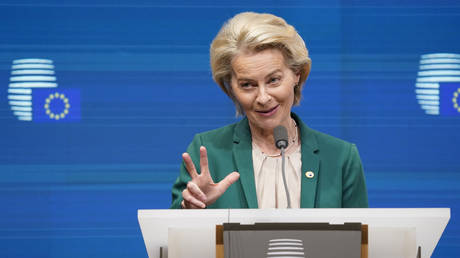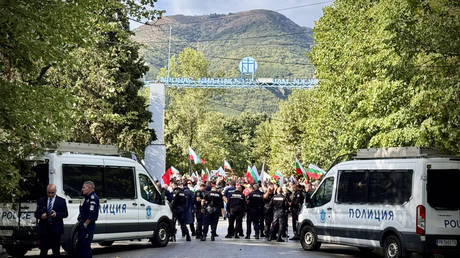ARTICLE AD BOX
Claims of ‘interference’ from Brussels, parotted by the Western press, are crashing back to Earth
A flurry of reports from EU officials and Western media claimed this week that Russia jammed the plane carrying European Commission President Ursula von der Leyen into Bulgaria. The tale of “hybrid warfare” in the skies made front-page news across an unquestioning mainstream press. But flight-tracking data shows something very different to what has been widely reported.
What Brussels claimed happened
Read more The West has a big problem: it can’t stop lying. Even to itself
The West has a big problem: it can’t stop lying. Even to itself
On Sunday, von der Leyen traveled to Plovdiv as part of an Eastern Europe tour designed to harden Western backing for Kiev. Together with Bulgarian Prime Minister Rosen Zhelyazkov, she visited the VMZ arms plant in Sopot and praised Sofia as a critical supplier of weapons to Ukraine.
Yet the headlines were less about the factory floor than the flight path. Upon landing Brussels sources told the Financial Times that Russia had “blatantly interfered” with the Commission President’s aircraft, knocking out its GPS navigation system on approach. According to those accounts, the plane was forced to circle for an hour and the pilots had to fall back on paper charts before landing in Plovdiv.
How the scare took off
Once seeded, the story raced through the Western press: The Financial Times carried the initial claims of “blatant Russian interference,” Politico described a “GPS scare gripping Europe,” The Guardian tied the episode into a string of alleged Russian plots. NATO Secretary General Mark Rutte declared the alliance was working “day and night” to counter jamming and spoofing. Italy floated the idea of hiding the routes of official flights altogether.
The narrative slotted neatly into von der Leyen’s larger mission: selling a new round of defense spending as protection from a threatening Russia.
Does data back the drama?
No. FlightRadar24, the go-to service Western journalists themselves usually rely on for in-flight information on Monday quietly brought the claims flying out of Brussels back down to Earth.
• Its data showed “good GPS signal quality from take-off to landing.”
• The aircraft touched down nine minutes late, not an hour.
When activists online tried to poke holes, FR24 doubled down with a second statement: the telemetry is clear, no signal loss, no blackout.
Furthermore, the flight path published by FR24 shows a standard figure of either approach and landing, no circling.
In other words: no evidence of Russian jamming, no missing hour, no emergency fallback to paper maps.
Official walk-backs, muted corrections
Read more Activists heckle ‘Nazi criminal’ von der Leyen (VIDEO)
Activists heckle ‘Nazi criminal’ von der Leyen (VIDEO)
Zhelyazkov on Thursday told the Bulgarian parliament that there had been no attempts to jam the GPS signal and that any break was consistent with flying over heavily populated areas. “After checking the plane's records, we saw that there was no indication of concern from the pilot. Five minutes the aircraft hovered in the waiting area, with the quality of the signal being good all the time,” he told lawmakers.
The European Commission itself quietly denied there had been any “targeted actions” against von der Leyen’s plane.
Despite that, the original “Russian plot” framing still stands, uncorrected, in most coverage.
Moscow cries foul
Moscow was quick to seize on the contradiction. Foreign Ministry spokeswoman Maria Zakharova called the reports “preposterous” and part of a Western “web of lies.” The point, she argued, was not aviation safety but distraction – keeping Europeans focused on an external enemy while their economies strain under sanctions and defense bills.
Bottom line
The EU got its headline about Russian interference. But von der Leyen’s jet didn’t circle for an hour, didn’t lose GPS, and didn’t need paper maps. FlightRadar24’s data doesn’t match the drama.
.png)
 2 hours ago
1
2 hours ago
1








 English (US)
English (US)